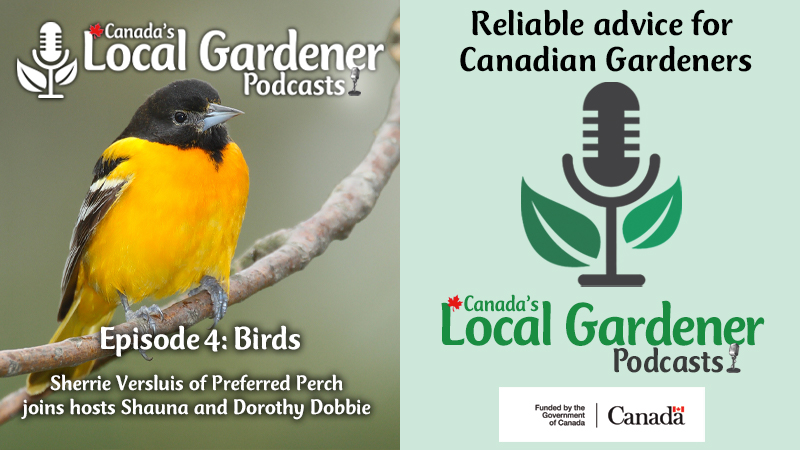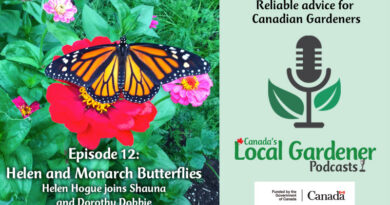Episode 4: Birds
Guest: Sherrie Versluis of The Preferred Perch
Gardeners love the birds that come to our yards and we have a fascination with watching our feathered friends at the end of winter and beginning of spring. Which ones stay through the winter and which ones go south? Some of the answers in episode 4 of our podcast about birds may surprise you.
Sherrie Versluis, owner of The Preferred Perch in Winnipeg, is the guest on this edition of Canada’s Local Gardener Podcast. She brings with her a wealth of information and stories about which birds have been visiting her yard lately and what she feeds them.
This winter, Sherrie has had 40 different types of bird on her acreage. She purchased 700 pounds of food for the redpolls alone, and more on other seeds and nuts and suet for other birds. It cost a little more because she used shelled sunflower seeds for the redpolls; nothing is too good for her birds!
She warns that you need to be careful when buying food for our winged friends because there are no regulations for what can be marketed to feed wildlife. Some feed can sit for some time in a big box store and contain pathogens that could kill the birds. One of her main concerns is what passes for hummingbird nectar. The little creatures are not attracted to the red in dyes that go into some of the stuff you can buy, and their tiny systems cannot process colourings and other chemicals that go into this feed.
Another cause of mortality for songbirds is windows. Songbirds typically fly at night, using star patterns for navigation. When they see a skyscraper with lights on, they can get confused and fly into the window. Add to that cats and changing habitats, and you can see how offering birds some easier food in our yards helps to even things out.
Join Dorothy and Shauna for episode 4 as they find out dozens of things about dozens of birds with Sherrie.
To listen to Episode 1 about Seeds, click here.
To listen to Episode 2 about Starting Tomatoes, click here.
To listen to Episode 3 about flowering shrubs, click here.


